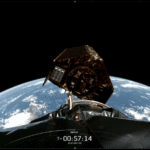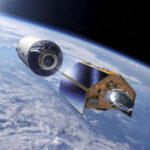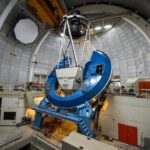Now Reading: Multiscale Astrobiology With The Vera C. Rubin Observatory Legacy Survey Of Space and Time
-
01
Multiscale Astrobiology With The Vera C. Rubin Observatory Legacy Survey Of Space and Time
Multiscale Astrobiology With The Vera C. Rubin Observatory Legacy Survey Of Space and Time
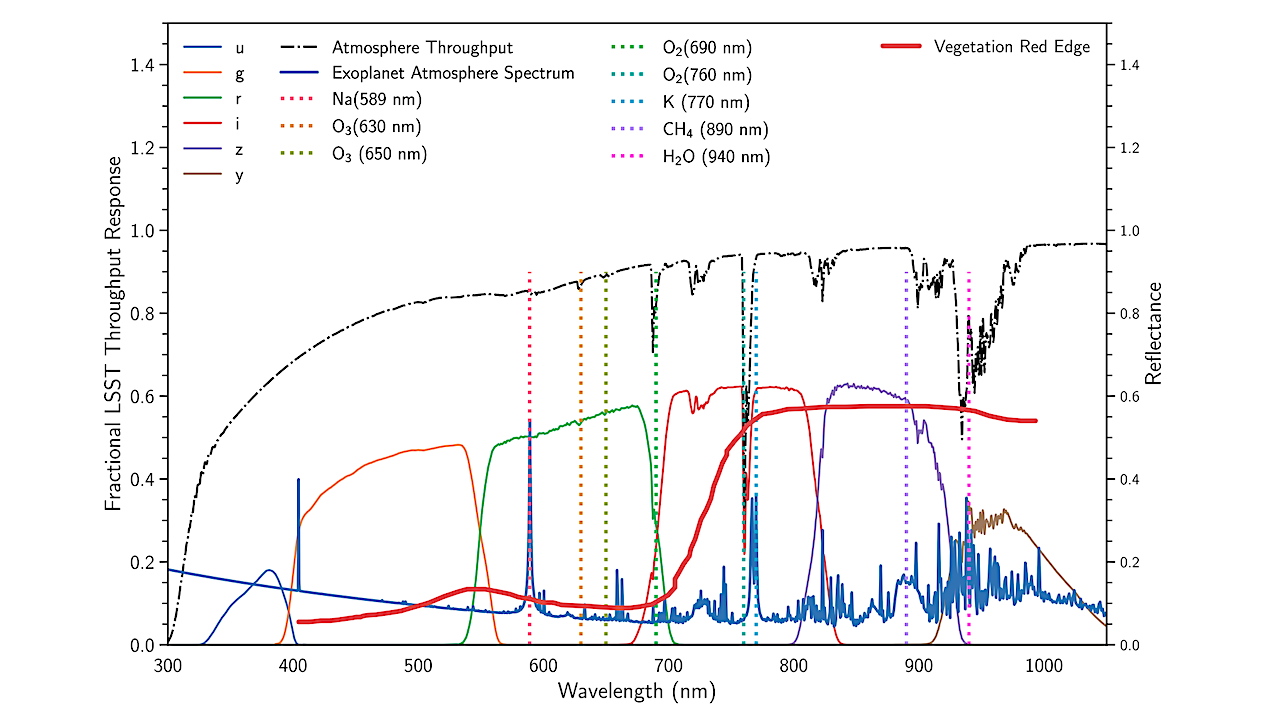

The LSST throughput curves across the ugrizybands (colored lines) represent the combined effects of the Rubin Observatory system4, including mirrors, lenses, filters, detectors, and a fiducial atmosphere at 1.2 airmasses (black dash-dotted line). Overlaid is a scaled spectrum of a 2R⊕ exoplanet atmosphere (solid blue line), orbiting a 1R⊙ star, modeled using ExoTransmit(Kempton et al., 2017). The Vegetation Red Edge (thick maroon line), from RapidEye Multi-Spectral Imager data 5, shows the reflectance increase near 700 nm. If an Earth-like exoplanet orbiting a Sun-like star harbored vegetation with similar photosynthetic properties, a comparable red edge feature could manifest in the exoplanet’s phase curve, detectable as brightness variations in LSST’s iband. LSST’s repeated observations over 10 years could enable statistical reconstruction of such phase curves. Vertical dotted lines mark biosignature wavelengths. — Frontiers
The Vera C. Rubin Observatory’s Legacy Survey of Space and Time (LSST) presents an unprecedented opportunity to advance the search for astrobiologically relevant data across diverse astronomical environments.
Through its extensive imaging capabilities, LSST will enhance our inventory of Solar System objects and assess their potential astrobiological conditions. Beyond the Solar System, LSST will survey billions of stars, contributing to the detection of exoplanets, characterizing planetary atmospheres at a zeroth- order level, identifying transient phenomena, and exploring conditions within habitable zones. In this paper, we highlight LSST’s unique contribution to astrobiology, complementing other missions and expanding the search for life beyond Earth in the coming decades.
The Vera C. Rubin Observatory, formerly the Large Synoptic Survey Telescope, located at Cerro Pachón in Chile, is one of the next class of giant earth-based telescopes. It will house the world’s largest digital camera ever fabricated for optical astronomy which will be used to collect hundreds of images of the Southern Hemisphere sky, collecting 20 TB of data every night, for 10 years, to produce a synoptic astronomical survey, the ‘Legacy Survey of Space and Time’ (Ivezić et al., 2019; Bianco et al., 2021). Its data will provide hitherto unseen details of our Universe. On a cosmological scale, it will provide the most detailed map of the distribution of dark matter in space and, hence, provide a measurement of the acceleration of the expansion of the universe, providing a stringent test of modern cosmology.
In parallel, the Vera C. Rubin Observatory will also be at the forefront of planetary science for the next decade. In our Solar system, LSST will be capable of detecting 90% of all near-Earth objects—asteroids with diameters > 300 m moving on orbits that pass close to our planet (see Schwamb et al., 2023, and references therein). The Observatory will also investigate comets and the Kuiper Belt, which is believed to contain nearly 100,000 objects, including possibly∼ O(10) with sizes comparable to Pluto (∼2, 000 km in diameter).
These objects are remnants of the Sun’s protoplanetary disk—from which all the planets and their moons, including Earth, emerged nearly 5 billion years ago. As such, they hold nearly pristine records of the composition and dynamics of Solar system primordial material, providing invaluable insights into the prebiotic chemistry in our planetary system. Since the discovery of the first exoplanets, exoplanetary and solar system sciences have largely remained separate—former focusing on limited information from many systems, and the later on extensive data of a single system (Horner et al., 2020).
LSST’s ability to observe both types of objects offers a new avenue for bridging these fields. Missions like Kepler and Transiting Exoplanet Survey Satelite (TESS) have established transit photometry as the primary tool for detecting exoplanets, shifting the focus from earlier techniques like radial velocity (e.g., Deeg and Alonso, 2018).
LSST will serve as a deep complement to the GAIA mission (see, e.g., Ivezić et al., 2012). LSST will use the GAIA catalog as its external reference system. For instance GAIA’s Data Release three provides precise trigonometric parallax and photometric measurements for∼1.5 × 109 objects down to G∼ 20 mag (Gaia et al., 2023). With full-sky coverage, GAIA is dense enough that each LSST observation will include tens to hundreds of GAIA stars. Over its 10-year lifespan, LSST’s observations will extend this reach by more than four magnitudes across half the sky, with LSST data expected to surpass GAIA’s precision1. This increased depth will allow LSST to identify and characterize faint stars and distant stellar populations, enabling new opportunities for exoplanet discovery and advancing astrobiological exploration.
In this paper we review LSST’s transformative role in astrobiology, focusing on its technological capabilities, its multidata synergies, and interdisciplinary applications. Section 2 explores LSST’s technological features for multiscale astrobiology across time, energy, and chemistry. Section 3 provides examples of astrobiological studies with LSST. Section 4 positions LSST role in multimodal data and multimessenger astrobiology. Section 5 overviews LSST as a platform for interdsiciplinary collaboration. Finally, Section 6 concludes with short proposition of community organization.
Multiscale astrobiology with the Vera C. Rubin Observatory Legacy Survey of Space and Time, Frontiers (open access)
Astrobiology
Stay Informed With the Latest & Most Important News
-
 012024 in Review: Highlights from NASA in Silicon Valley
012024 in Review: Highlights from NASA in Silicon Valley -
 02Panasonic Leica Summilux DG 15mm f/1.7 ASPH review
02Panasonic Leica Summilux DG 15mm f/1.7 ASPH review -
 03How New NASA, India Earth Satellite NISAR Will See Earth
03How New NASA, India Earth Satellite NISAR Will See Earth -
 04And Thus Begins A New Year For Life On Earth
04And Thus Begins A New Year For Life On Earth -
 05Astronomy Activation Ambassadors: A New Era
05Astronomy Activation Ambassadors: A New Era -
06SpaceX launch surge helps set new global launch record in 2024
-
 07Space Force plans new ‘Futures Command’ amid pressure to speed up modernization
07Space Force plans new ‘Futures Command’ amid pressure to speed up modernization















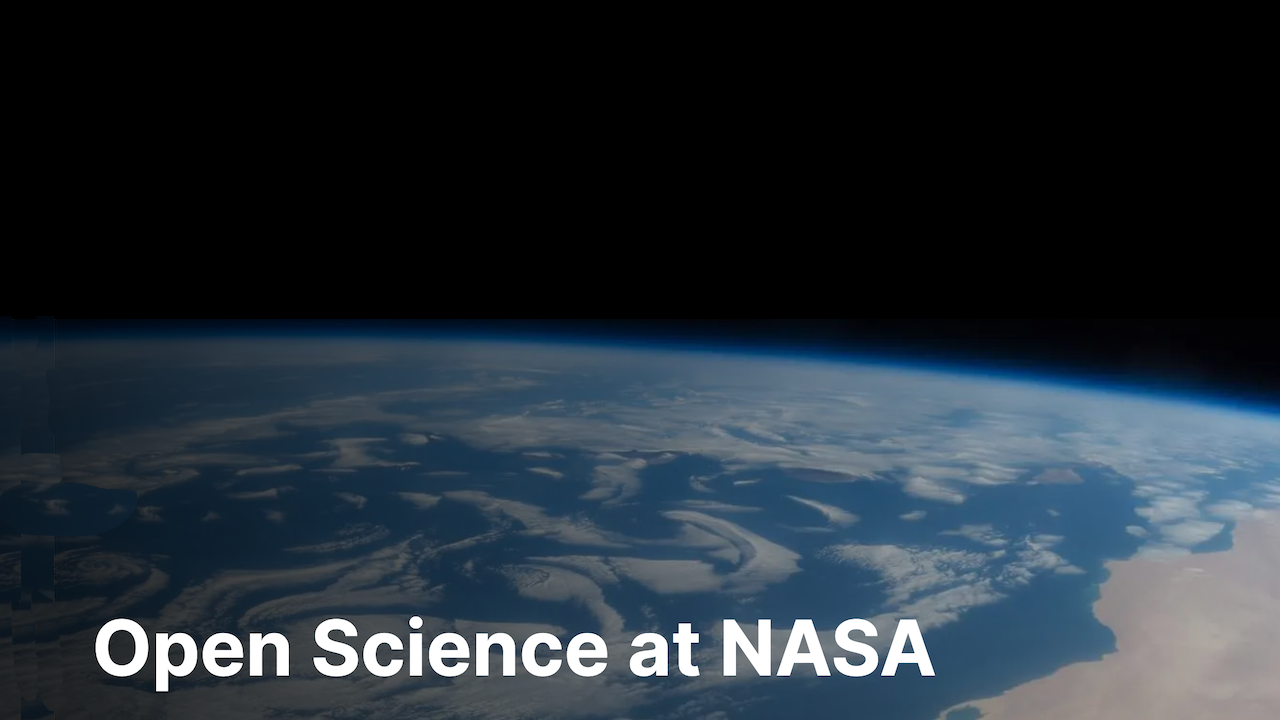
![From CO2- to H2O-dominated Atmospheres And Back — How Mixed Outgassing Changes The Volatile Distribution In Magma Oceans Around M Dwarf Stars [TRAPPIST-1]](https://flyingtomars.com/wp-content/uploads/2025/05/from-co2-to-h2o-dominated-atmospheres-and-back-how-mixed-outgassing-changes-the-volatile-distribution-in-magma-oceans-around-m-dwarf-stars-trappist-1.png)

